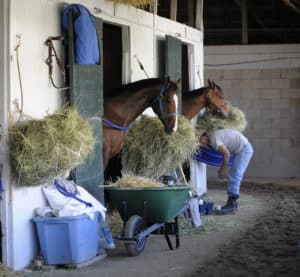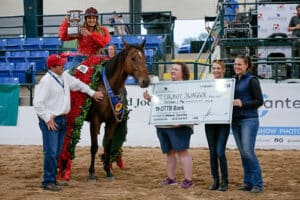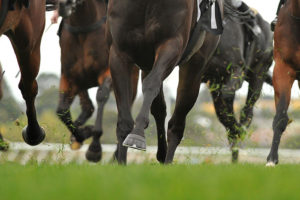
Condition Your Horse Like a Pro
How to help performance horses of all types reach peak fitness.

How to help performance horses of all types reach peak fitness.

Discover how a young horse with persistently puffy hocks but no lameness was diagnosed with and treated for a medial malleolus lesion in the Fall 2023 issue of The Horse.

Addressing your OTTB’s diet in three phases will help you provide the nutrition he needs to thrive in his new career.

Learn about recent research on the causes of EIPH, how it affects horses and their performance, and furosemide use in equine athletes.

Read about the significance and prevalence of these injuries and how veterinarians diagnose them.

How can biomarkers be used to help improve performance and reduce injury risk in horses?

Researchers found high concentrations of Sarcina, a bacterium associated with poor gastric emptying, in horses’ glandular lesions.

This year’s “Mega-Makeover” will include cohorts from 2020 and 2021 after last year’s event was postponed due to the pandemic.

Researcher: ACOX1 might factor into energy metabolism that contributes to the different needs of certain breeds, including Thoroughbreds and Arabians, as well as “rustic” breeds capable of surviving harsh conditions.

The Thoroughbred and Young Rider of the Year Awards salute horses excelling in noncompetitive careers and recognize juniors, respectively.

Thirty-six out of 38 racehorses with subchondral bone cysts, mainly in the stifle, became sound within months of having a newly designed prosthesis implanted into their cysts.

The International Forum for the Aftercare of Racehorses (IFAR) is hosting its fifth forum as a virtual series on each Tuesday during the month of April.

Safety in Thoroughbred horse racing became a very public concern two years ago when a series of catastrophic breakdowns at Santa Anita Park in Southern California became national news. Veterinarians presented safety measures put in place to protect horses and humans.

Measuring mRNA markers might offer an economical, effective, and noninvasive way to detect horses at risk of catastrophic injury.

The Pleasant Valley State Prison program, an extension of the Thoroughbred Retirement Foundation’s Second Chances/Groom Elite Program, offers second careers to its racehorses and vocational training for student/inmates.

This is the first genetic variant for hypoparathyroidism identified in any domestic animal species. Testing is now available.
Stay on top of the most recent Horse Health news with
© 2022 Copyright Statement dolor sit amet, consetetur sadipscing User Terms, sed diam nonumy eirmod tempor invidunt ut labore et dolore magna aliquyam erat, sed diam voluptua. At vero eos et accusam et justo duo dolores et ea rebum. Stet clita kasd gubergren, no sea takimata sanctus est Lorem ipsum dolor sit amet.
"*" indicates required fields